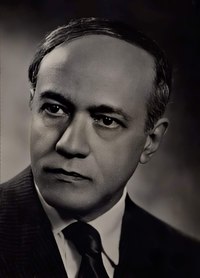União, 1893 – Rio de Janeiro (Brasil), 1953
The writer from Alagoas maintained religiosity as the expressive axis of his work, projecting alongside Murilo Mendes the restoration of poetry in Christ. As a poet, he published Essa negra Fulô (1928), which addresses social, religious, and dreamlike themes through Parnassian sonnets and free verse. His poetry, which supports the black cause, brings him closer to the Cuban Nicolás Guillén. In the lyrical epic Invenção de Orfeu (1952), according to Antonio Candido, formal complexity and thematic depth coexist alongside his “Northeastern” and “religious” phases. He became established in the poetic production recognized by Mário de Andrade as “scandalously beautiful.”
His poems reveal aspects that approach hallucinations with surrealistic traits, predominant in the photomontage album A pintura em pânico (1943). The Catholic influence that turned him into a militant permeates his prose in novels such as Calunga (1935) and Guerra dentro do beco (1950). He also wrote texts for theater and cinema and worked as a painter, photographer, essayist, politician, university professor, and public health physician. Another work: Livro de sonetos (1949).



